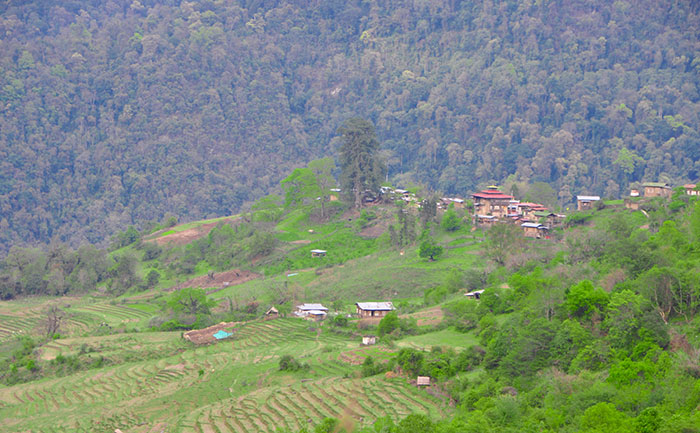Tshering Namgyal | Lhuentse
Sheep rearing, a newly introduced in Ney village in Lhuentse, is proving to be a challenge for the farmers.
Most of the 120 sheep supplied from sheep breeding centre in Bumthang with the funding support from Global environment facility (GEF) in June last year have died.
The 12 interested households, from both the rehabilitation settlement and old settlement area, were given eight sheep each. Only around 20 sheep remain now.
Tashi Jamtsho, one of the beneficiaries who lost seven sheep, said most of the sheep suffered from feet and skin diseases and treatments did not work.
“I was excited in the beginning and saw it as an opportunity to boost income,” he said.
Ney tshogpa, Pema Tsheten, said most of the sheep died in summer. It is also believed that impurities in the water could have contributed to the dead of the animals.
“Sheep need a clean and large pasture. Livestock officials found liver damage in the dead sheep,” he said, suggesting that supplying mithun bull would be helpful instead. Rearing jersey was also found to be challenging in the village.
Assistant dzongkhag livestock officer, Phurpa Tshering, said sheep farming was introduced in the chiwog on pilot basis after GEF asked the dzongkhag to look for support area from among the three gewogs of Maedtsho, Jarey and Gangzur.
He said dzongkhag initially suggested Tsango in Khoma where the sheep rearing culture still continuous but it didn’t fall under the project area.
He said the farming aimed at supplementing the rural income from the wool production could not sustain.
“The farmers were trained by the officials from sheep breeding centre in Bumthang and were managing well. I think it’s the unfavourable climatic condition could be the cause of deaths,” he said.
However, Phurpa Tshering said as part of the dzongkhag’s highland development programme there were plans to expand sheep population in Tsango village, only village in the dzongkhag with sheep farming culture.


